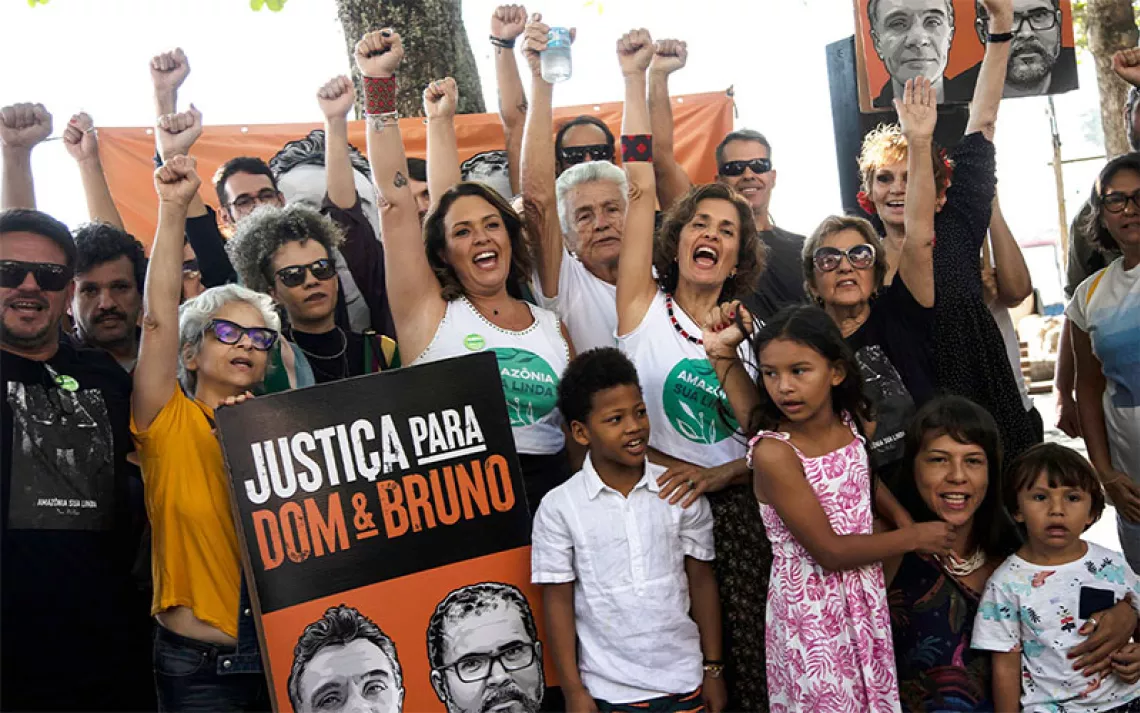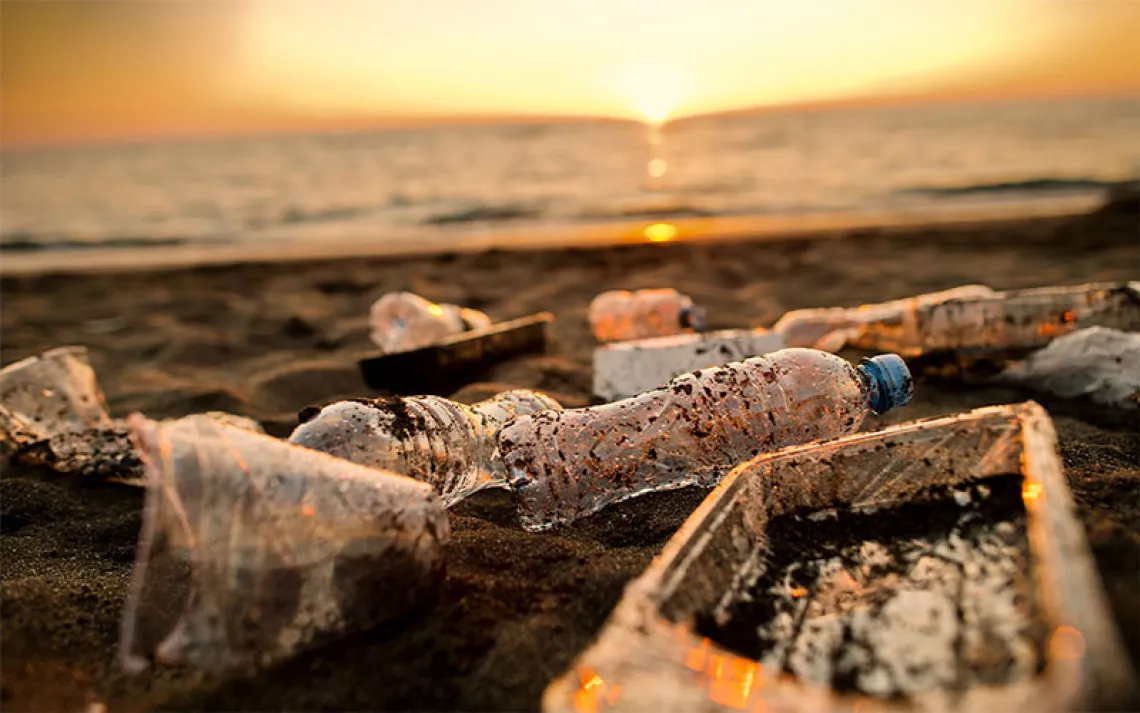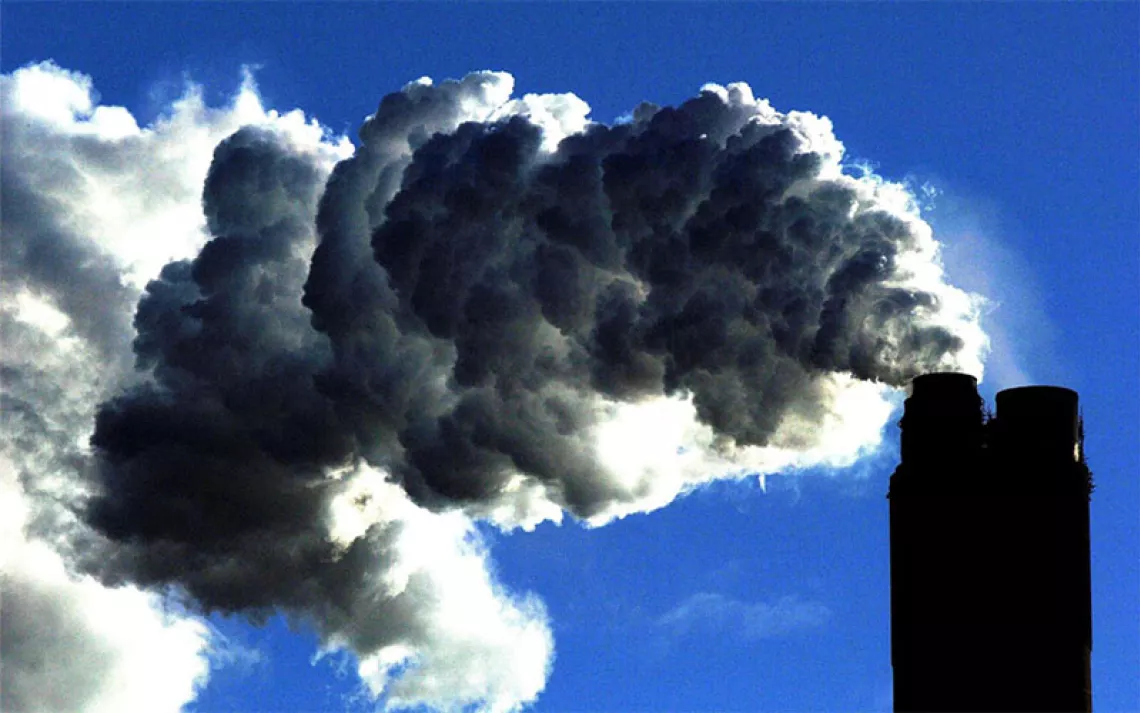This International Women’s Day, Meet the Girls Leading a Movement
Five climate activists talk about why they’re skipping school
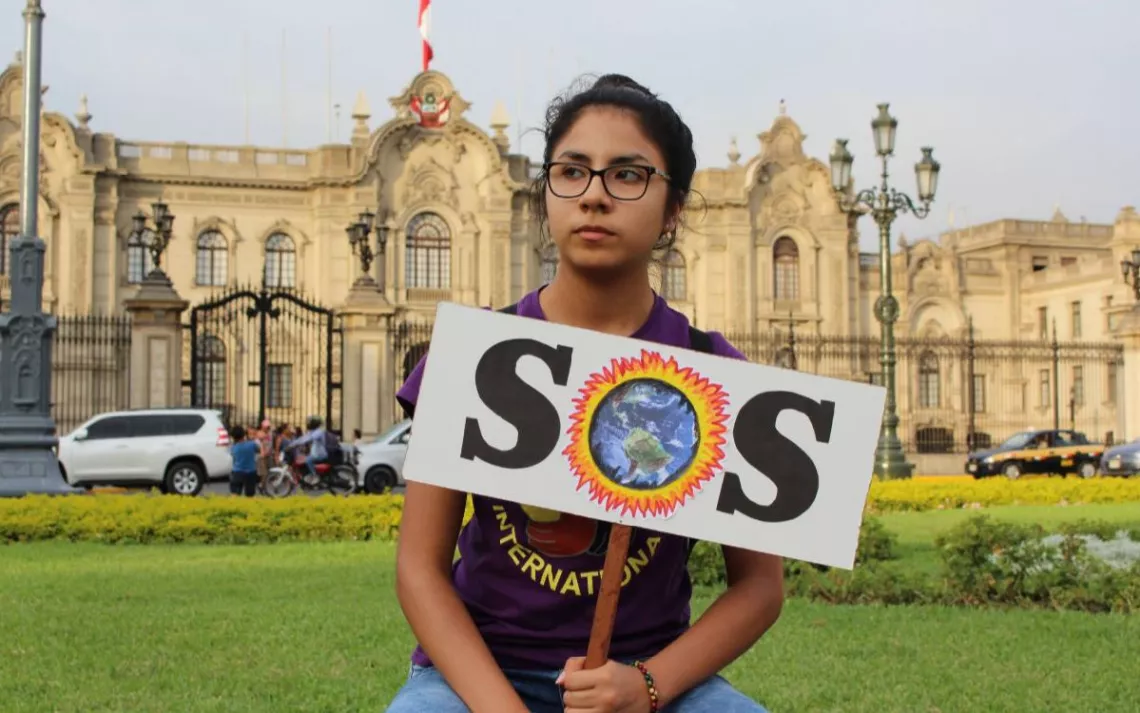
Dayamis Torino Véliz on strike in Lima, Peru | Photo courtesy of Dayamis Torino Véliz
Last August, when 16-year-old Greta Thunberg began her weekly sit-ins outside Sweden’s Parliament to protest inaction on climate change, she quietly started a global movement. Inspired young people everywhere followed suit, skipping school to get the attention of the adults in charge. Enter #FridaysForFuture, which launched as a direct result of Thunberg’s Instagram and Twitter posts. Now, kid-led strikes and marches—usually on Fridays and often organized by teenage girls—have become a weekly occurrence around the globe.
In honor of International Women’s Day, Sierra spoke with five young female climate activists: Nineteen-year-old Dayamis Torino Véliz has been striking on Fridays in Lima, Peru, and 22-year-old Luisa Neubauer is organizing strikes across Germany. In January, Vanessa Nakate, 22, started leading strikes in Kampala, Uganda, and in Ontario, Canada, 11-year-old Sophia Mathur has been leading climate demonstrations since November. Meanwhile, 14-year-old Kallan Benson launched #SchoolStrike4Climate at the Department of Energy in Washington, D.C., on Friday, December 7, and organized another strike the following week outside the D.C. convention center. On January 9, when lawmakers in her home state of Maryland returned to work for the 2019 legislature session, Benson stopped speaking, vowing to continue her silent strike until her leaders stepped up to pass comprehensive environmental legislation.
Here’s what these youth activists have to say about what inspires them, what’s next for this burgeoning movement, and the advice they have for fellow activists.
Sierra: When did you first learn about climate change? Was there a moment, or a particular experience, when you knew you had to act?
Dayamis Torino Véliz: My mom was an activist with the environmental collective Canto Vivo, and she brought me along with her to various actions related to reforestation. I grew up planting trees, principally in parks around Lima. A big turning point for me was when I witnessed a custom that is regularly practiced during carnival, called cortamonte o yunsas, which is basically cutting down trees for fun. Thousands of trees. And now not only in carnival times, but also during the year, people dance around them as they cut them down. It’s motivated by collective “happiness”—motivated by dance and a lot of alcohol. We at Canto Vivo made the decision to identify with Thunberg’s objectives, which are the same as ours. Because of this, and because I am responsible for the children and young people of Canto Vivo, I decided to organize a movement in Lima.
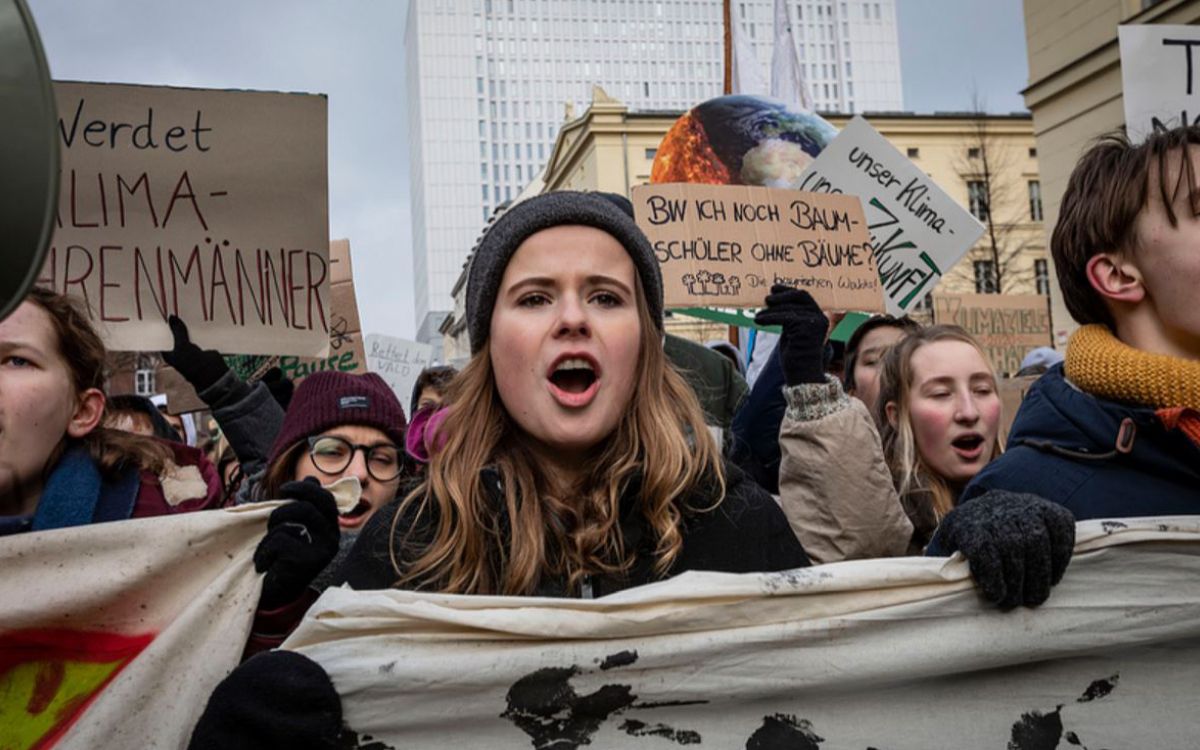
Luisa Neubauer in in Göttingen, Germany | Photo by Marlin Helene
Luisa Neubauer: I was always kind of irritated that we didn’t seem to care so much about the climate, but I relied on the fact that there is a government, there is a climate conference, which has the responsibility of taking care of that. This year, I went to the climate conference in Poland, and I realized that no one was taking this issue seriously enough. While I was there, I felt a bit betrayed because I realized the people I thought were taking care of my future—they’re not doing enough. So I went out with Greta, just her and I—everybody was looking at her, everybody was reporting on her; it seemed very effective. So I went back [to Germany] and I wrote an email to everyone I knew from Berlin. People were not on the spot excited about what I was going to do. They were saying “It is cold” and “Is this really your goal?” But as it turned out, there were other people thinking about this in Germany, and we quickly became friends. Five days after I asked people, we had strikes in 14 German cities. And since December 14, people in Germany have pretty much been striking every week.
Vanessa Nakate: I was talking with my uncle about how in the month of January in Uganda, people [now] know it to be a hot month. We rarely see rain in that month. I asked him if it was the same 20 years back. And he told me how it wasn’t. Farmers used to love that month. It’s turned from a month filled with rain into a month full of drought. So I started doing research and learned all about climate change on the internet. And I just knew I had to act.
Sophia Mathur: I’ve gone lobbying with my mom on Parliament Hill and on Capitol Hill. I decided to act when there was a whole bunch of fires around my hometown of Sudbury [Canada] this summer. There were also many tornado warnings. And then I saw Greta Thunberg’s video, and that got me into the movement.
Kallan Benson: My mom is a marine biologist, so there was never any question about whether it was happening or if humans were causing it. Even with that knowledge, my activism didn’t start until I was nine, when my younger brother and I decided we really wanted to do more. Our commitment inspired my parents to march with us in the first Peoples Climate March in New York City in 2014.
Sierra: What do you have to say to naysayers who say you should be in school, that you’re just “playing truant”?
Kallan Benson: First of all, if the world was doing something about climate change, kids wouldn’t have to be out doing this. Our futures are going to be harmed by this crisis, so this is the most important action we can take to prepare—we have to go and speak out. Second, being out there is an incredible learning experience. I’m meeting my legislators and learning about how government works. I’m learning how to interact with people without talking. I’m not losing an education—I’m gaining one in a different way.
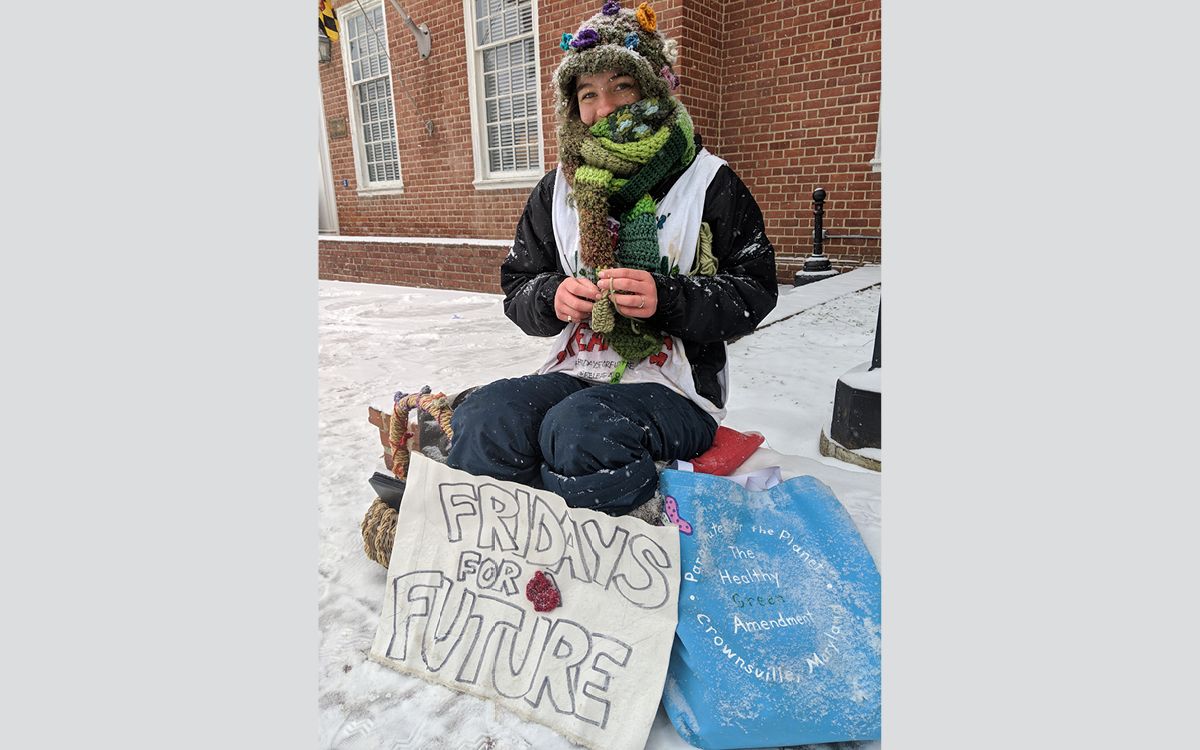
Kallan Benson protesting in Annapolis, Maryland | Photo courtesy of Kallan Benson
Dayamis Torino Véliz: The most urgent homework that we have is to defend life. We will accomplish little by earning more diplomas if our house is in flames. As for those who want to intimidate us, talking about what we “should be doing,” we ask if they are fulfilling their responsibilities. They are the ones that have provoked this reaction in young people.
Luisa Neubauer: If every person saying kids should be in school went to their local politicians and just asked them what they were doing on climate to get us back in school, things would be moving faster. Kids should be in school, but kids should also have a future they should learn for. In school, you always feel like things—systems and governments and political events—just happen, and they’re there and you can’t really have a say. But I think I’m starting to understand that everything that’s around us is created by people, so people have the power to change those things as well.
Sierra: What does a typical day of your strike look like, and how has it developed over time?
Kallan Benson: I usually get to the state house at 10 or 11 A.M. The legislators get out of session around 11, and I like to be sitting there when they come out. I wave to everyone and try to be as friendly as possible. At this point, a lot of people recognize me and will say hello. The package delivery man is really nice, so is the postman, and the security guards are very helpful and friendly. On most days I sit outside and crochet. I add six inches every day to a green lifeline—a scarf that illustrates the length of my strike and urgency for action: The longer we wait to take action, the longer the lifeline we will need. I also crochet little butterfly pins that I give out to people to wear in support of the movement. At the local level, I am supporting a Healthy Green Amendment to the Maryland Constitution. At the global level, I’m supporting the strike demands of Fridays For Future: follow the Paris Agreement and the IPCC report, stay below 1.5℃, focus on the aspects of equity and climate justice clearly stated throughout the Paris Agreement, and unite behind the science. Some days I go into the legislative office buildings to hand out butterflies or watch a bill hearing. I go home around 2 or 3 P.M.
Vanessa Nakate: I strike to demand that [local leaders] enforce a law that enables every home to have at least one tree. Because when trees are many, they help to reduce greenhouse gases like carbon dioxide. Also, I want them to ban the use of polyscene. It’s getting out of control. There’s polyscene everywhere. In the beginning, many people used to ask questions . . . but people are starting to understand, especially through social media. I had the opportunity to go to Kampala University to have a talk with students there. Nakabuye Hilda was one of students, and she has started her own strikes. Then she talked to other students like Leah Namugerwa. And they’ll be striking on March 15. There has been progress. It’s getting known in Uganda.
Sophia Mathur: Our last strike was on March 1 at Laurentian University—it was really big and really different than all the other ones. We’ve almost decided on the Canadian message, but we’re still working on it: “Listen to the experts and cooperate.” There’s really no one leader for the movement in Canada; we’re all working together to make sure that nobody is getting left behind. Our national strike is May 3.
Sierra: Environmental activists are disproportionately likely to attract trolls, haters, and skeptics. What’s your experience been like with the trolls, and how do you deal with that?
Vanessa Nakate: Well, I don’t know what is wrong with climate deniers. Their ignorance is the greatest killer. Some of them have attacked me, because you know how most of the strikers are teenagers? I’m 22, so many trolls attack me because of that. But now, I’m kind of used to it. In the beginning, I used to try to inform them that climate change was real . . . but then I realized they’re just very stubborn. At some point, I just started ignoring them.
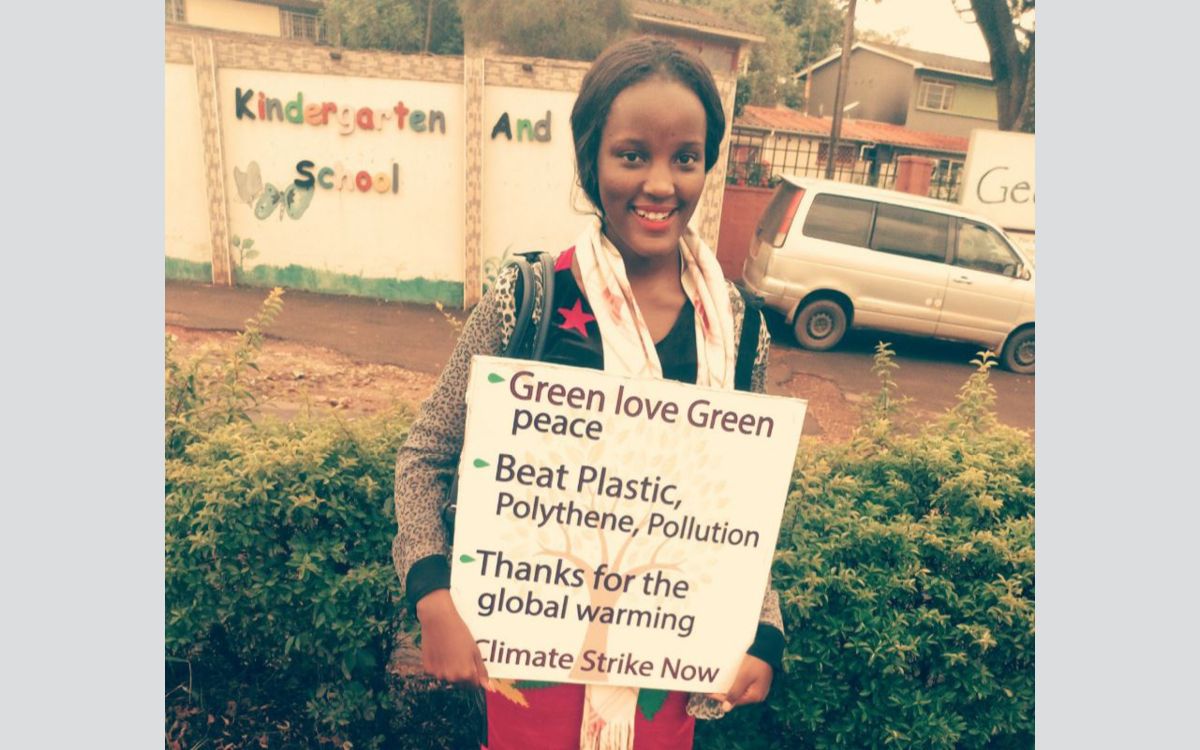
Vanessa Nakate striking in Kampala, Uganda | Photo courtesy of Vanessa Nakate
Luisa Neubauer: You very quickly have to learn that there are people that categorically don’t like you. It doesn’t have to be about something that you’re doing. . . . It could be about the most irrelevant aspect of your life. And I think that once you get to that point, then you can concentrate on the things that you find more constructive, rather than get distracted from what you are fighting for.
Kallan Benson: During my silent strike at the Maryland State House, no one has come up and said anything negative. There are some who just refuse to acknowledge my presence, but that's not bad. My second Fridays For Future in D.C., we met several deniers. When I talked with them, their arguments fell apart quickly. It was quite sad because these people were coming out of a major scientific conference and still held these views, but the vast majority were supportive.
Sierra: Any heroes in the world of climate action? Who do you most look up to?
Sophia Mathur: I am a big fan of Catherine McKenna and Greta Thunberg—they really inspire me.
Kallan Benson: Destiny Watford is an incredible young woman who stopped a trash incinerator from being built in her community. Carol Brantley was an amazing person who was a board member for Chesapeake Climate Action Network and a mentor to me. And, all the strikers around the world are my heroes.
Dayamis Torino Véliz: I respect and admire Chico Méndez, who was a defender of the Amazon rainforest. My uncle has also been very influential in my life. He was the founder of the organization I am in now. He always urged on the environmental movement and continues to do so today.
Luisa Neubauer: So when I organized our first nationwide strike, I was reading the autobiography of Michelle Obama. And I found that quite inspiring. I think a lot about what kind of a person you need to be to make a change. Often people say, “I knew [so-and-so] was going to be a leader from the beginning.” But [Michelle Obama] zooms in on this long journey that isn’t necessarily linear. I also have this friend, Larissa Crawford, who is the G7 youth delegate for Canada, and she’s not only incredible at what she does, but she’s also a young mom, a student mom. She’s the person I think of when things get tough.
Vanessa Nakate: There are many, but especially Greta Thunberg, Haven Coleman, Alexandria Villaseñor, Zayne Cowie, and Lilly Platt.
Sierra: What’s your main piece of advice for fellow youths who want to take part in climate activism?
Kallan Benson: Don’t be intimidated by what you think you can’t do. Do what you can. Learn about the issue. It’s important to focus on making better choices and decisions, not on finding the “right” solution or answer. There are a lot of ways to contribute. Also, just thinking about the issue when you make your everyday decisions can be incredibly important.
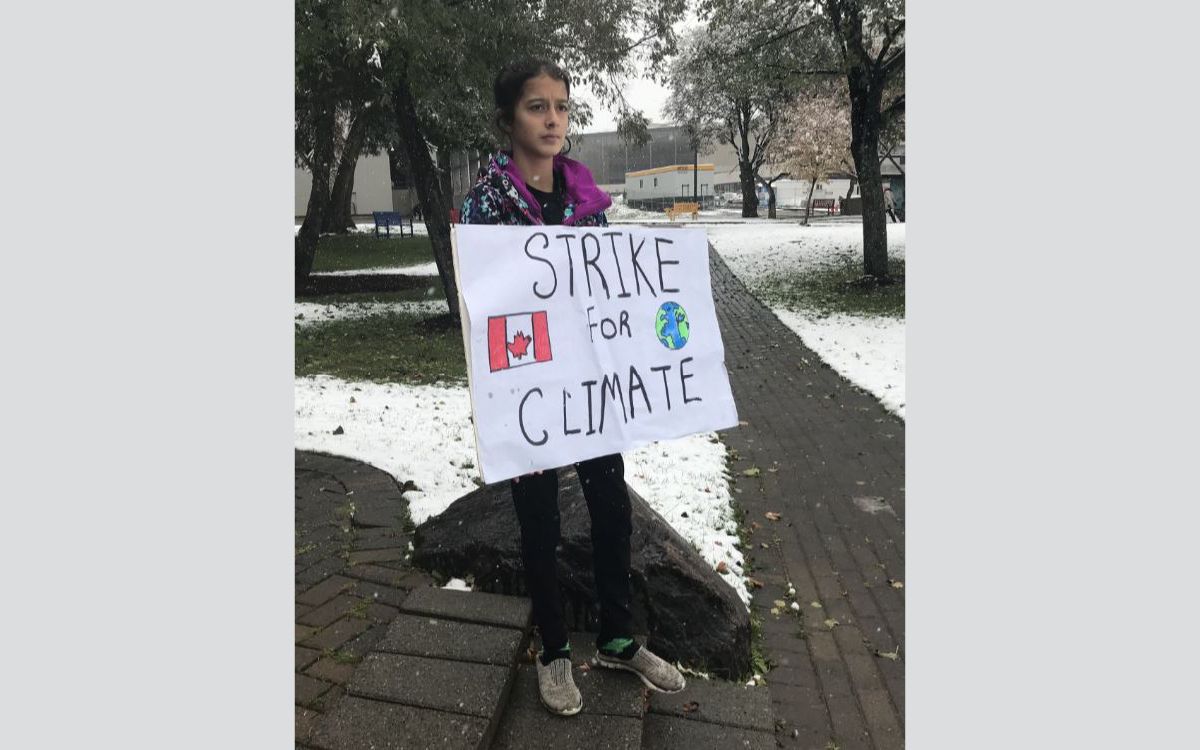
Sophia Mathur on strike in Ontario, Canada | Photo courtesy of Sophia Mathur
Sophia Mathur: I know the majority of kids can’t skip school, because their parents won’t let them, so we suggest wearing green bandanas or anything green to support people striking and telling people in school about climate change.
Dayamis Torino Véliz: I think that everyone has a duty to defend life. This fact obligates us to act ethically toward our planet, our Pachamama, as our Peruvian ancestors called it. Mother Earth is not only what shelters us, but is what provides us with everything necessary for our existence. Because of this, it is our duty, now more than ever, to fight against climate change. We are all obligated to do this; there is no excuse to exclude yourself.
Vanessa Nakate: Talk to your parents about what you want to do because . . . if your parents love you and you give them a reason to strike, I think they will support you and maybe strike with you. And then that’s an open door. Then there are those that don’t want to strike. They need to join us too because it's hard to fight alone, but we are all headed for the same catastrophe. . . . It doesn’t matter in your country whether you start alone, because when you start, others will follow. I striked alone for four weeks, but now many are doing it and soon we will have thousands.
Luisa Neubauer: Don’t underestimate people power. Don’t let elders tell you what you can achieve. And if possible, always bring your friends, because it's just more fun.
These interviews have been edited for length and clarity.
 The Magazine of The Sierra Club
The Magazine of The Sierra Club

